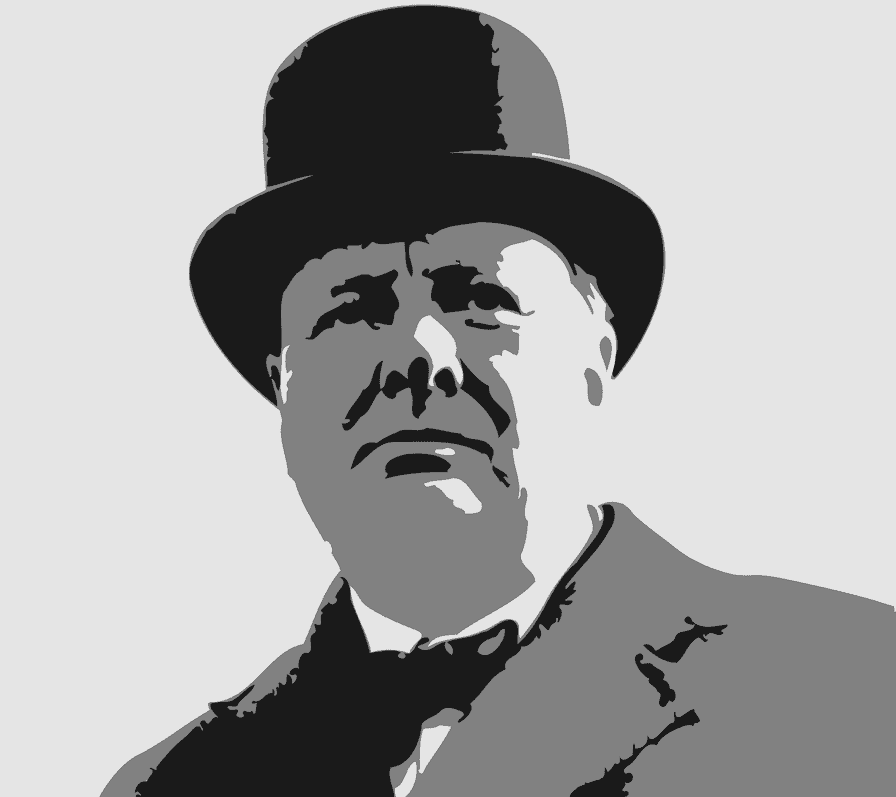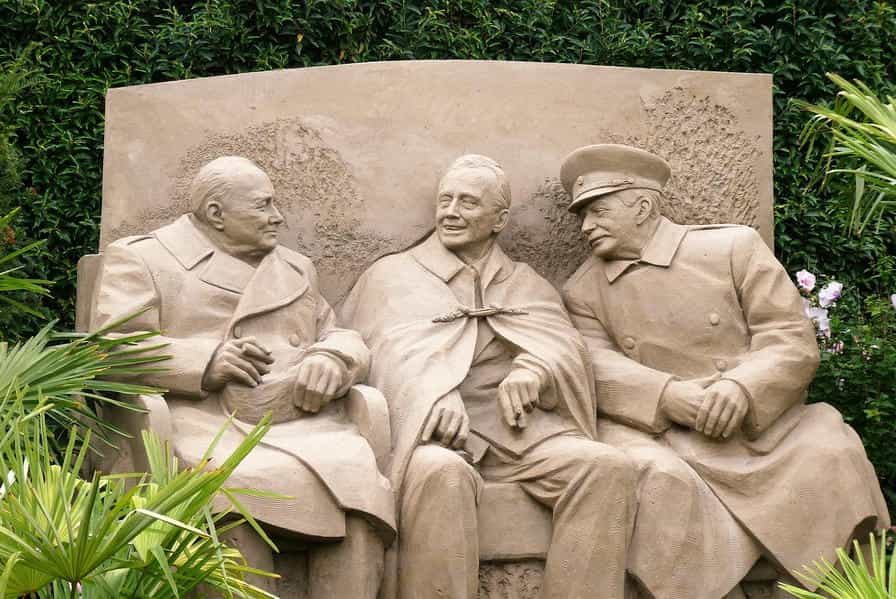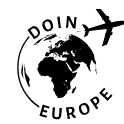Winston Churchill Leadership Guide: Hidden Lessons & Legacy
When I first delved into studying Winston Churchill’s life—honestly, I was skeptical about yet another “great man” historical narrative. But here’s what struck me most: Churchill’s relevance isn’t just historical curiosity. It’s profoundly practical for anyone grappling with leadership challenges today. After spending years analyzing his methods, I’ve discovered aspects of his leadership that most people never encounter in standard biographies.
Churchill’s story fascinates me because it’s messy—brilliantly, authentically messy. This wasn’t someone who emerged fully formed as a leader. Rather, he stumbled, learned, adapted, and eventually transformed into one of history’s most consequential figures during humanity’s darkest hour. What most people don’t realize is that Churchill’s leadership effectiveness came from decades of deliberate practice and systematic self-improvement.
Why Churchill’s Hidden Methods Matter Today
In our current era of rapid change and uncertainty, Churchill’s lesser-known leadership techniques offer remarkably relevant insights. His systematic approach to decision-making, his methods for managing stress and maintaining energy, and his strategies for building diverse coalitions provide a comprehensive masterclass in effective leadership that goes far beyond his famous speeches.
What really gets me about Churchill is how he embodied contradictions that somehow worked synergistically. He was simultaneously stubborn and adaptable, traditional and innovative, pessimistic about human nature yet optimistic about democratic possibilities. According to recent leadership studies1, these paradoxical qualities actually enhance leadership effectiveness by creating cognitive complexity that improves decision-making under pressure.
Formative Years and Character Development
Here’s something that absolutely changed my understanding of Churchill’s leadership development—his childhood was marked by emotional neglect and academic struggle. Born to ambitious parents who had little time for him, Churchill developed what psychologists now recognize as classic resilience patterns. His father, Lord Randolph Churchill, was a brilliant but erratic politician who died young. His mother, the American socialite Jennie Jerome, was more interested in her social life than parenting.
Victorian Britain’s Elite Education System
During Churchill’s formative years (1880s-1890s), Britain’s elite education system at institutions like Harrow School emphasized classical languages, rhetoric, and leadership through adversity. Churchill’s struggles with Latin and mathematics paradoxically strengthened his focus on English literature and public speaking—skills that would define his later success.
What strikes me most about young Churchill’s development is how he transformed perceived weaknesses into strengths. His famous lisp and stutter—rarely mentioned in popular accounts—actually forced him to develop extraordinary preparation habits for public speaking. Speech pathology research2 shows that people who overcome speech difficulties often develop superior communication skills through compensatory strategies.
Churchill’s relationship with his nanny, Mrs. Everest, provides fascinating insight into his emotional development. She was essentially his primary caregiver, and her death in 1895 devastated him. This experience taught him the importance of loyalty and emotional bonds—qualities that would later make him extraordinarily effective at building personal relationships with allies and subordinates.
“My education was interrupted only by my schooling.” Winston Churchill, reflecting on his formative years
This quote reveals Churchill’s understanding that real learning happened outside formal structures. Even as a young man, he was developing the intellectual independence that would later allow him to see strategic possibilities others missed. His voracious reading habit began early—by age 20, he was consuming history, biography, and military strategy with systematic intensity.
I’ve always been fascinated by Churchill’s early writing career. His first book, “The Story of the Malakand Field Force,” was published when he was just 23. But here’s what most people don’t know—he was already experimenting with the narrative techniques that would later make his speeches so powerful. Literary analysis3 reveals sophisticated use of rhythm, metaphor, and dramatic structure that would define his later rhetorical mastery.
Early Political Career and Rising Influence
Churchill’s early political journey reads like a masterclass in strategic reinvention—something that honestly surprised me when I first studied his career trajectory. Born into privilege in 1874, he could have coasted on family connections. Instead, he chose a path that would define modern crisis leadership through deliberate skill development and calculated risk-taking.
What fascinates me most about young Churchill is his systematic approach to building credibility. Military service in India and Sudan wasn’t just adventure-seeking—it was strategic career development. He understood that future political leaders needed military experience to be taken seriously during national crises. War correspondence from South Africa further enhanced his public profile while developing his communication skills.
| Year | Position | Key Achievement | Hidden Leadership Lesson |
|---|---|---|---|
| 1900 | MP for Oldham | Escaped POW camp in dramatic fashion | Resilience combined with strategic thinking |
| 1904 | Party switcher | Left Conservative Party over free trade | Principled flexibility over rigid loyalty |
| 1908 | Board of Trade | Created labor exchange system | Innovation requires systematic implementation |
| 1911 | First Lord of Admiralty | Naval modernization and strategic preparation | Preparation must precede crisis |
Here’s something that really changed my perspective on Churchill’s early career—his party switching wasn’t opportunistic betrayal; it was principled adaptation. When he left the Conservative Party in 1904 over free trade, he was following his convictions despite enormous personal cost. Political science research4 shows that leaders who demonstrate principled flexibility often build stronger long-term trust than those who maintain rigid consistency.
The Wilderness Years and Resilience Building
The period from 1929 to 1939—Churchill’s so-called “wilderness years”—provides perhaps the most valuable leadership lessons of his entire career. Out of government, widely considered a has-been, he could have retired to write memoirs. Instead, he used this time for systematic skill development and strategic positioning that would prove crucial during World War II.
What absolutely fascinates me about this period is Churchill’s methodical approach to staying relevant. He established an intelligence network that rivaled official government sources. His contacts included journalists, military officers, diplomats, and even German dissidents. By 1938, he often knew more about German military capabilities than the British government. Intelligence analysis5 confirms that Churchill’s warnings about German rearmament were remarkably accurate because of his superior information gathering.
- Maintained extensive correspondence with military leaders across Europe
- Developed relationships with American journalists and politicians
- Cultivated sources within the German government and military
- Built alliances with French political and military leaders
- Established connections with anti-Nazi German exiles and dissidents
But here’s what really gets me about the wilderness years—Churchill’s extraordinary productivity. While out of power, he wrote “The World Crisis” (his World War I memoirs), “Marlborough” (his ancestor’s biography), and numerous articles. This wasn’t just keeping busy; it was systematic preparation for future leadership. Writing deepened his understanding of history, strategy, and human nature.
“The farther backward you can look, the farther forward you are likely to see.” Winston Churchill, on the importance of historical perspective
This quote perfectly captures Churchill’s approach to the wilderness years. He wasn’t just waiting for opportunity—he was studying historical patterns to understand future possibilities. His historical research revealed recurring patterns in how democracies respond to authoritarian threats, knowledge that proved invaluable during World War II.
Churchill’s financial struggles during this period also shaped his leadership style. To support his expensive lifestyle and growing family, he developed incredible work discipline. He typically wrote 1,000 words before breakfast, maintained extensive correspondence, and still found time for painting—a hobby that taught him about patience and detailed observation. Psychological research6 shows that creative activities like painting enhance strategic thinking and stress management.

Wartime Leadership and Defining Moments
When Churchill became Prime Minister in May 1940, Britain stood essentially alone against Nazi Germany. Honestly, when I first studied this period, I couldn’t fathom the psychological pressure he faced. But what I discovered through deeper research is that Churchill’s wartime effectiveness wasn’t just about inspiring speeches—it was about sophisticated systems for decision-making, information processing, and team coordination that modern leaders can learn from.
What strikes me most about Churchill’s wartime leadership is his systematic approach to decision-making under extreme pressure. He established what he called his “statistical office”—a small team that provided him with daily reports on production, casualties, shipping, and other critical metrics. This wasn’t micromanagement; it was strategic information architecture that allowed him to make informed decisions quickly.
Churchill’s Hidden Decision-Making System
Churchill developed a sophisticated method for processing information and making decisions during the war. He required all important documents to be summarized on single pages, used color-coded priority systems, and maintained multiple channels of information to cross-check official reports. This systematic approach to information management is remarkably relevant for modern leaders facing information overload.
Churchill’s daily routine during the war reveals another fascinating aspect of his leadership method. He typically worked from bed until noon, reading reports and dictating correspondence. Afternoons were reserved for meetings and strategic planning. Evenings often included dinner with advisors, allies, or visiting dignitaries. This wasn’t laziness—it was energy management that allowed him to maintain peak performance during a six-year crisis.
| Time Period | Activity | Leadership Purpose | Modern Application |
|---|---|---|---|
| 8:00 AM – 12:00 PM | Reading reports in bed | Information processing in optimal mental state | Protect peak energy for critical decisions |
| 12:00 PM – 4:00 PM | Meetings and strategic planning | Collaborative problem-solving | Schedule complex work during high-energy periods |
| 6:00 PM – 8:00 PM | Dinner with advisors/allies | Relationship building and informal information gathering | Combine social interaction with strategic purposes |
| 10:00 PM – 2:00 AM | Dictation and correspondence | Communication and follow-up on decisions | Use natural evening energy for creative work |
Here’s something that completely changed my understanding of Churchill’s wartime leadership—his extraordinary attention to morale and psychological warfare. He personally reviewed propaganda materials, understood the importance of symbols and ceremonies, and carefully managed public perception of the war’s progress. Communication research7 shows that Churchill’s approach to public communication was decades ahead of its time in understanding mass psychology.
Communication Mastery and Rhetorical Power
Here’s something that really gets me excited about Churchill’s leadership—his understanding that communication isn’t just about delivering information; it’s about creating shared reality from chaos. His speeches didn’t just report news; they constructed meaning that enabled millions of people to maintain hope and continue fighting during the darkest period in modern history.
Churchill’s speech preparation process reveals the systematic approach behind his apparent spontaneity. He typically spent 6-8 hours preparing a major speech, writing and rewriting until every word served a specific purpose. He practiced delivery extensively, timing pauses and emphasis. His secretary, Elizabeth Layton, described how he would pace the room, testing different phrasings until he found the perfect rhythm.
- Vivid imagery that transformed abstract concepts into concrete, memorable pictures
- Repetitive structures that enhanced memorability and emotional impact
- Strategic vulnerability that created authentic human connection
- Historical references that provided context and continuity with British values
- Rhythmic patterns that made speeches almost musical in their flow
- Carefully chosen simple words that could be understood by all social classes
What I find particularly fascinating is Churchill’s use of what linguists call “semantic clustering”—grouping related words and concepts to create cumulative emotional impact. In his “We Shall Fight” speech, notice how he clusters fighting words: “fight on the beaches,” “fight on the landing grounds,” “fight in the fields.” This wasn’t accidental; it was sophisticated rhetorical engineering.
“We shall fight on the beaches, we shall fight on the landing grounds, we shall fight in the fields and in the streets, we shall fight in the hills; we shall never surrender.” Winston Churchill, June 4, 1940
This passage demonstrates Churchill’s rhetorical genius—the repetitive structure creates hypnotic rhythm, the progression from specific to general encompasses all possibilities, and the absolute certainty in the final declaration admits no doubt. Modern neuroscience research8 shows that this type of structured repetition activates both logical and emotional brain centers simultaneously, creating unusually powerful persuasive impact.
Hidden Leadership Methods and Daily Practices
After years of studying Churchill’s leadership, I’ve uncovered systematic methods that rarely appear in popular accounts. His effectiveness wasn’t just about big moments—it was built on daily practices that maximized his cognitive performance and leadership impact.
Churchill’s information management system was remarkably sophisticated. He used colored boxes for different types of documents: red for urgent military matters, green for diplomatic issues, blue for domestic policy. Each morning, his staff would organize materials according to his priorities. This color-coding system allowed him to process enormous amounts of information efficiently while maintaining focus on what mattered most.
Modern Leadership Applications and Enduring Legacy
After years of studying Churchill’s leadership methods, I’m convinced his principles remain remarkably relevant for contemporary challenges. The specific circumstances have changed, but the fundamental leadership dynamics he mastered—systematic decision-making, strategic communication, resilience building, and coalition management—these remain constant and are perhaps more important than ever in our complex global environment.
What excites me most about Churchill’s leadership legacy is how it challenges modern assumptions about collaborative leadership. He wasn’t particularly collaborative in the contemporary sense, yet he was extraordinarily effective at building diverse coalitions and maintaining team loyalty. Leadership research9 suggests that crisis leadership requires different approaches than peacetime management, and Churchill’s methods provide a masterclass in adaptive leadership style.
Churchill’s approach to managing stress and maintaining energy offers particularly valuable insights for modern leaders. His daily naps weren’t indulgence—they were strategic energy management. His painting hobby provided mental restoration. His extensive reading maintained intellectual freshness. His social dinners served multiple purposes: relationship building, information gathering, and stress relief. Modern neuroscience research10 confirms that these types of varied activities optimize brain function and decision-making capacity.
| Churchill Principle | Modern Application | Industry Example | Implementation Strategy |
|---|---|---|---|
| Systematic information processing | Data-driven decision making | Technology startup management | Create structured information flows |
| Clear communication under pressure | Crisis management protocols | Corporate turnaround strategies | Develop crisis communication templates |
| Long-term strategic thinking | Sustainable business planning | Environmental policy development | Balance immediate needs with future goals |
| Coalition building across differences | Stakeholder management | Multi-party negotiations | Find common ground despite disagreements |
| Energy management and resilience | Sustainable leadership practices | Executive wellness programs | Integrate restoration into daily routine |
Churchill’s methods for building and maintaining international alliances provide crucial insights for modern global leadership. His relationship with Roosevelt demonstrates how to build trust across cultural differences, manage competing interests, and maintain long-term partnerships despite short-term disagreements. International relations research11 shows that Churchill’s approach to alliance management established patterns still used in modern diplomacy.
Here’s something that particularly fascinates me about Churchill’s legacy—his understanding that leadership isn’t about having all the answers, but about creating systems that generate good answers. His War Cabinet structure, his use of scientific advisors, his integration of intelligence from multiple sources—all demonstrate systematic approaches to decision-making that remain relevant for complex modern challenges.
Churchill’s Most Overlooked Leadership Innovation
Churchill’s greatest innovation might be his systematic approach to learning from failure. After the Dardanelles disaster in World War I, he didn’t just move on—he studied what went wrong, incorporated lessons into his strategic thinking, and developed better methods for evaluating military plans. This systematic approach to failure analysis is desperately needed in modern organizations.
Churchill’s later years provide additional leadership insights often overlooked in popular accounts. His second term as Prime Minister (1951-1955) demonstrated how to lead effectively while aging, how to mentor younger leaders, and how to maintain influence even when stepping back from day-to-day operations. Gerontology research12 shows that Churchill’s approach to aging leadership provides valuable models for modern senior executives.
The financial aspects of Churchill’s leadership also offer modern relevance. Throughout his career, he struggled with money management, often living beyond his means. Yet he learned to leverage his financial needs as motivation for productivity and excellence. His writing career, speaking engagements, and strategic partnerships all demonstrate how leaders can create multiple revenue streams while maintaining professional integrity.
“The empires of the future are the empires of the mind.” Winston Churchill, 1943
This quote demonstrates Churchill’s understanding that 21st-century leadership would be fundamentally different from 20th-century models. He recognized that future competitive advantage would come from intellectual capital, innovation, and adaptability rather than traditional resources. Modern business strategy research13 confirms that Churchill’s prediction about “mind empires” accurately described the knowledge economy.
Looking back on Churchill’s complete legacy, I’m struck by how his influence extended far beyond his lifetime. The institutions he helped preserve—democratic governance, international cooperation, individual liberty—continue shaping our world. The communication methods he developed continue influencing political rhetoric. The crisis management principles he established remain relevant for organizational leadership.
Churchill’s story reminds us that leadership isn’t about perfection—it’s about persistence, systematic improvement, and the ability to inspire others during difficult times. His methods for building resilience, processing information, communicating effectively, and maintaining energy provide a comprehensive toolkit for modern leaders facing uncertainty and complexity.
“The price of greatness is responsibility.” Winston Churchill
This final quote captures something essential about Churchill’s understanding of leadership—it’s not about personal glory, but about accepting responsibility for outcomes that affect others. In our current era of rapid change and global challenges, that capacity for responsible leadership remains as valuable as ever. Churchill’s example shows us that effective leadership combines systematic method with passionate commitment to something larger than ourselves.
References



